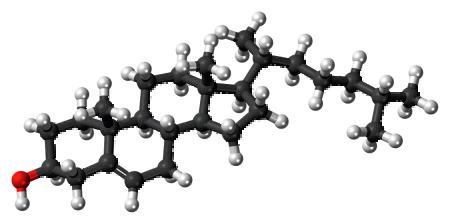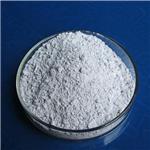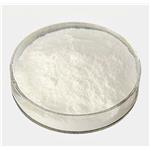YK11: Bioavtivity and Application
Dec 5,2022
General description
YK11 was first studied by Japanese researcher Yuichiro Kanno in 2011. It has been found to be a partial agonist for the androgen receptor (AR) and is genetically selective, leading researchers to believe that the compound is SARM.
Bioactivity
Partial Agonist of the Androgen Receptor
A novel steroid compound, (17 alpha,20E)-17,20-[(1-methoxyethylidene)bis(oxy)]-3-oxo-19-norpregna-4,20-diene-21-carboxylic acid methyl ester (YK11), was found to be a partial agonist of the androgen receptor (AR) in an androgen responsive element (ARE)-luciferase reporter assay. YK11 accelerates nuclear translocation of AR. Furthermore, YK11 does not induce amino/carboxyl-terminal (N/C) interaction and prevents 5-alpha-dihydrotestosterone (DHT)-mediated N/C interaction. Thus, YK11 activates AR without causing N/C interaction, which may in turn be responsible for the partially agonistic nature of YK11 observed in the ARE-luciferase reporter system. YK11 acts as a gene-selective agonist of AR in MDA-MB 453 cells. The effect of YK11 on gene expression relative to that of androgen agonist varies depending on the gene context. YK11 activated the reporter gene by inducing the translocation of the AR into the nuclear compartment, where its amino-terminal domain (NTD) functions as a constitutive activator of AR target genes. Our results suggest that YK11 might act as selective androgen receptor modulator (SARM) [1].
Mechanism of action
The myogenic differentiation of C2C12 myoblast cells is induced by the novel androgen receptor (AR) partial agonist, (17 alpha,20E)-17,20-[(1-methoxyethylidene)bis-(oxy)]-3-oxo-19-norpregna-4,20-diene-21-carboxylic acid methyl ester (YK11), as well as by dihydrotestosterone (DHT). YK11 is a selective androgen receptor modulator (SARM), which activates AR without the N/C interaction. In this study, we further investigated the mechanism by which YK11 induces myogenic differentiation of C2C12 cells. The induction of key myogenic regulatory factors (MRFs), such as myogenic differentiation factor (MyoD), myogenic factor 5 (Myf5) and myogenin, was more significant in the presence of YK11 than in the presence of DHT. YK11 treatment of C2C12 cells, but not DHT, induced the expression of follistatin (Fst), and the YK11-mediated myogenic differentiation was reversed by anti-Fst antibody. These results suggest that the induction of Fst is important for the anabolic effect of YK11 [2].
Androgens are key regulators that play a critical role in the male reproductive system and have anabolic effects on bone mineral density and skeletal muscle mass. We have previously reported that YK11 is a novel selective androgen receptor modulator (SARM) and induces myogenic differentiation and selective gene regulation. In this study, we show that treatment of YK11 and dihydrotestosterone (DHT) accelerated cell proliferation and mineralization in MC3T3-E1 mouse osteoblast cells. Further, YK11-treated cells increased osteoblast specific differentiation markers, such as osteoprotegerin and osteocalcin, compared to untreated cells. These observations were attenuated by androgen receptor (AR) antagonist treatment. To clarify the effect of YK11, we investigated rapid non-genomic signaling by AR. The phosphorylated Akt protein level was increased by YK11 and DHT treatment, suggesting that YK11 activates Akt-signaling via non-genomic signaling of AR. Because it is known Akt-signaling is a key regulator of androgen-mediated osteoblast differentiation, YK11 has osteogenic activity as well as androgen [3].

Fig. 1. Effect of YK11 on Osteoblast Proliferation.
Studies on the in vivo metabolism
A steroidal compound was recently detected in a seized black market product and was identified as (17 alpha,20E)-17,20-[(1-methoxyethylidene) bis (oxy)]-3-oxo-19-norpregna-4,20-diene-21-carboxylic acid methyl ester (YK11). This compound is described to possess selective androgen receptor modulator- and myostatin inhibitor-like properties. As YK11 is an experimental drug candidate and a non-approved substance for humans, scientific data on its metabolism is scarce. Due to its steroidal backbone and the arguably labile orthoester-derived moiety positioned at the D-ring, substantial metabolic conversion in vivo was anticipated. To unambiguously detect urinary metabolites of YK11, an elimination study with six-fold deuterated YK11 was conducted. Post-administration specimens were analyzed using hydrogen isotope ratio mass spectrometry coupled to single quadrupole mass spectrometry to identify metabolites alongside basic mass spectrometric data. Further characterization of those metabolites relevant to sports drug testing was accomplished using gas chromatography-high resolution-high accuracy mass spectrometry. Fourteen deuterated urinary metabolites were detected comprising unconjugated, glucuronidated, and sulfoconjugated metabolites. As expected, no intact YK11 was observed in the elimination study urine samples. While the unconjugated metabolites disappeared within 24 hours post-administration, both glucuronidated and sulfated metabolites were traceable for more than 48 hours. The chemical structures of the two most promising glucuronidated metabolites (5 beta-19-nor-pregnane-3 alpha,17 beta,20-triol and 5 beta-19-nor-pregnane-3 alpha,17 beta-diol-20-one) were verified by in-house synthesis of both metabolites and confirmed by nuclear magnetic resonance analysis. In order to elucidate their potential in sports drug testing, both were successfully implemented into the currently applied analytical method for the detection of anabolic agents [4].
Application
As a preventative health supplement for bacterial sepsis
Muscle wasting caused by catabolic reactions in skeletal muscle is commonly observed in patients with sepsis. Myostatin, a negative regulator of muscle mass, has been reported to be upregulated in diseases associated with muscle atrophy. However, the behavior of myostatin during sepsis is not well understood. Herein, we sought to investigate the expression and regulation of myostatin in skeletal muscle in mice inoculated with gram-negative bacteria. Interestingly, the protein level of myostatin was found to increase in the muscle of septic mice simultaneously with an increase in the levels of follistatin, NF-kappa B, myogenin, MyoD, p- FOXO3a, and p-Smad2. Furthermore, the inhibition of myostatin by YK11 repressed the levels of pro-inflammatory cytokines and organ damage markers in the bloodstream and in the major organs of mice, which originally increased in sepsis; thus, myostatin inhibition by YK11 decreased the mortality rate due to sepsis. The results of this study suggest that YK11 may help revert muscle wasting during sepsis and subdue the inflammatory environment, thereby highlighting its potential as a preventive agent for sepsis-related muscle wasting [5].
References
[1] Kanno Y, Hikosaka R, Zhang S Y, et al. (17α, 20E)-17, 20-[(1-Methoxyethylidene) bis (oxy)]-3-oxo-19-norpregna-4, 20-diene-21-carboxylic Acid Methyl Ester (YK11) Is a Partial Agonist of the Androgen Receptor[J]. Biological and Pharmaceutical Bulletin, 2011, 34(3): 318-323.
[2] Kanno Y, Ota R, Someya K, et al. Selective androgen receptor modulator, YK11, regulates myogenic differentiation of C2C12 myoblasts by follistatin expression[J]. Biological and Pharmaceutical Bulletin, 2013, 36(9): 1460-1465.
[3] Yatsu T, Kusakabe T, Kato K, et al. Selective androgen receptor modulator, yk11, up-regulates osteoblastic proliferation and differentiation in mc3t3-e1 cells[J]. Biological and Pharmaceutical Bulletin, 2018, 41(3): 394-398.
- Related articles
- Related Qustion
- The Origin, Mechanism, Potential Benefits, and Disputes of YK11 Mar 29, 2024
YK11 was first studied in 2011 and was found to be a partial agonist of androgen receptor (AR) with genetic selectivity.
- Benefits and Mechanism of YK-11 Aug 16, 2022
YK-11 is a synthetic steroidal selective androgen receptor modulator (SARM).It is a gene-selective partial agonist of the androgen receptor (AR) and does not induce the physical interaction between the NTD/AF1 and LBD/AF2 (known as the N/C
Cholesterol is a waxy substance. Your body needs it to build cells and make vitamins and other hormones. But too much cholesterol can pose a problem.....
Dec 5,2022Biochemical EngineeringSome research suggests that SAMe is more effective than placebo in treating mild-to-moderate depression and is simply as effective as antidepressant medications without the side effects.....
Dec 5,2022Biochemical Engineering







